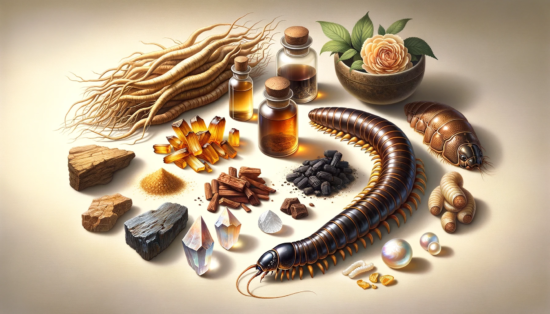Cockroaches for your heart, the anxiety of weight loss, fungus on cannabis, and more
03 Nov 2023
Posted by Andrew Kantor
IBD infection risk
When someone has inflammatory bowel disease, they’re at increased risk of infection — that’s not news. But Swedish researchers found that “This is also true for patients who appear to have low-active disease in clinical terms, but who have microscopic intestinal inflammation beneath the surface.”
In other words, unless their intestines are fully healed there’s a higher risk of sepsis and other infections that require hospitalizations — a 59% higher risk, in fact. So simply going by “My meds made me feel better” might not be enough.
A small correction
Yesterday’s article “Ozempic freak-out” mistakenly left out the link to the source — it explained how companies and stock holders are (over?) assuming how much weight loss is going to affect consumer behavior. You can read that source here.
Another odd Ozempic side effect
How about social anxiety? Who would have expected that when overweight people slimmed down, suddenly more people started talking to them? For folks used to being on the sidelines, the renewed attention can be stressful even when it’s just a bunch more “Hi, how are you”s.
“When attention shifts from negative attention (jeers, dirty looks, rude comments, being ignored) to positive attention (compliments, flirting, offering connection or support, etc.), it may feel like unfamiliar territory.”
Delicious heart medicine
It’s called tongxinluo. It includes “seven herbs and animals including cockroach, scorpion, cicada, centipede, and leech” and sometimes — seriously — frankincense and myrrh. In traditional Chinese medicine, it’s used to to treat patients after a heart attack or stroke, and it was approved for that in China in 1996.
And, now, after a “large-scale, Western-style clinical trial” of more than 3,700 patients, University of Texas researchers say it actually works, and pretty well:
Results showed major adverse cardiac and cerebrovascular events were about 30% lower in the group that took tongxinluo compared with those taking the placebo at 30 days. These benefits persisted for one year after discharge.
Why does it work? They don’t know, and with so many ingredients and combinations it might take some work to find out. In the meantime you’ll have to use your blender.

A better melanin than melanin
Natural melanin can protect against skin cancer by scavenging up free radicals caused by sun exposure. But you know what it’s missing? Nanotechnology. So material scientists at Northwestern came to the rescue, creating a synthetic melanin they say is better than the real stuff for healing skin.
“It’s like super melanin. It’s biocompatible, degradable, nontoxic and clear when rubbed onto the skin. In our studies, it acts as an efficient sponge, removing damaging factors and protecting the skin.”
Not only could it be used as a treatment, it can also prevent sun damage by, say, being added to sunscreen. Not enough? It can also protect people from “heavy metals and toxins, particularly nerve gas.” No word on whether it’s also a dessert topping.
Cannabis fungi danger
Fungi really like cannabis. You can find more than 100 species on the plant, from the roots to the buds, yet none of the states that have legalized it in any form require any kind of testing to see if those fungi are dangerous.
Much ado about nothing? Consider this: A 2020 study “revealed cannabis users are 3.5 times more likely to develop a fungal infection compared to non-users.” (A 2019 study found the vast majority of infections came from smoking, not edibles, if you’re curious.)
Cannabis use is associated with fungal infections in kidney transplant patients and an increased risk of pneumonia, which can be triggered by fungal infections, too.
And if we’ve learned anything from the HBO documentary “The Last of Us,” it’s not to mess with fungi.
Note: Not a single “fun guy” joke. You’re welcome.
Infant mortality nudges up
ICYMI: The US infant mortality rate went up for the first time in two decades, according to National Center for Health Statistics data. From 2021 to 2022 the overall rate went up 3%, the first “statistically significant jump” since 2002.
Georgia was one of four states — the others being Iowa, Missouri, and Texas — with the largest increases.
Georgia health officials said they are working to understand infant mortality trends in that state, and noted the 2022 rate was similar to rates in 2018 and 2019.
Of the 38 highest-income countries (that make up the OECD*), the US ranks #33 — better than Chile but worse than Slovakia.
* Organisation for Economic Co-operation and Development


